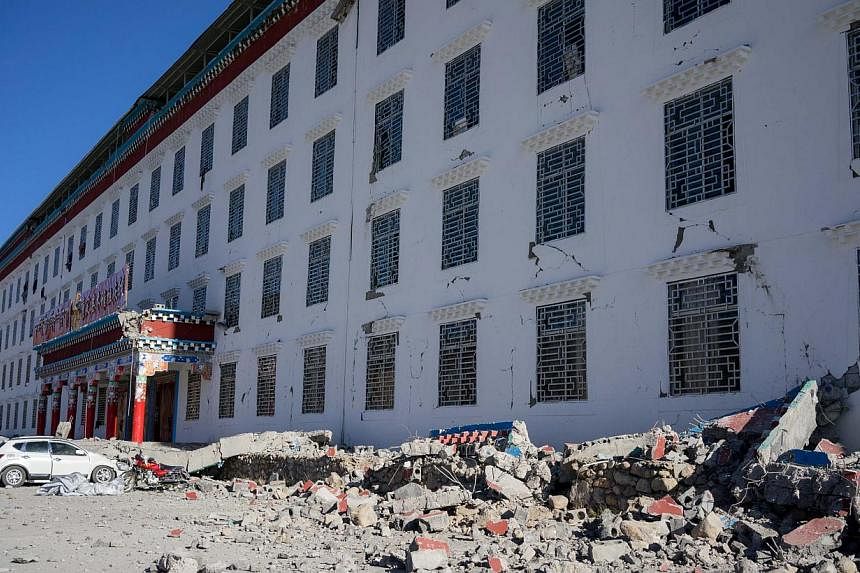BEIJING - The death toll from a 6.3-magnitude earthquake that struck a remote part of China's south-west has risen to at least five, as a separate 6.7-magnitude earthquake in central Japan left 39 people injured.
The quake in China struck 39km north-west of Kangding in the mountainous west of Sichuan province last Saturday afternoon.
The US Geological Survey said the earthquake had a depth of 14km. South-west China lies where the Eurasian and Indian plates meet and is prone to seismic activity.
The latest toll was reported yesterday by state news agency Xinhua, which also adjusted the number of injured from 60 to 54, with three of them said to be in critical condition.
"Within nine hours, emergency services were able to successfully rescue all those injured," Xinhua said, without giving details on the current state of the rescue operation.
Just under 80,000 people were affected by the quake, Xinhua said, adding that 25,000 houses were damaged and 6,200 people relocated.
The epicentre was at the town of Tagong, where a police rescue team arrived two hours after the tremor struck.
"Six military aircraft, 60 medical staff and nearly 1,000 soldiers and militia remain on standby," Xinhua reported.
Ms Kungar Como, 20, and her grandmother were at home in Tagong when the earthquake struck.
"We felt a strong tremor, so I helped my grandmother outside. But she was hit by a collapsing wall," said Ms Kungar. "People soon came to our aid and she was on her way to hospital about half an hour after the quake."
The government announced yesterday that it will disburse 50 million yuan (S$10.6 million) to the disaster relief efforts. The money will cover the relocation of those affected by the quake; care and life assistance initiatives; the repair and reconstruction of residences; and subsidies for surviving family members of those who were killed.
In May 2008, a 7.9-magnitude quake rocked Sichuan, killing more than 80,000 people and flattening swathes of the province. It was the worst quake disaster to hit China in over three decades.
Japan was also jolted by an earthquake last Saturday night, which left at least 39 people injured, seven seriously.
The quake struck at a depth of about 5km at the epicentre, in the north of Nagano prefecture, northwest of Tokyo, according to the Japan Meteorological Agency.
The government said yesterday that the quake also destroyed houses and snapped water pipes, with the worst damage in mountainous areas.
In Nagano prefecture's famous Hakuba Village - a popular ski resort that hosted part of the 1998 Winter Olympic Games - many homes were toppled and destroyed, the local authorities said.
Bird's-eye footage by public broadcaster NHK showed houses reduced to rubble.
Around 30 people were trapped in the collapsed village houses soon after the quake, but were all rescued, Jiji Press reported.
The meteorological agency warned that strong aftershocks could still occur in the coming week.
There was no damage to the seven nuclear reactors at the sprawling Kashiwazaki-Kariwa plant in neighbouring Niigata prefecture as they have been offline since 2011. Other nuclear plants were also intact.
Japan is hit by around a fifth of the world's powerful quakes every year and sits at the conjunction of several tectonic plates.
A strong tremor revives memories of the 9.0-magnitude quake in March 2011, which triggered a tsunami that sparked the Fukushima atomic plant disaster and left 18,000 people dead or missing.
AGENCE FRANCE-PRESSE, YOMIURI/ASIA NEWS NETWORK, XINHUA


